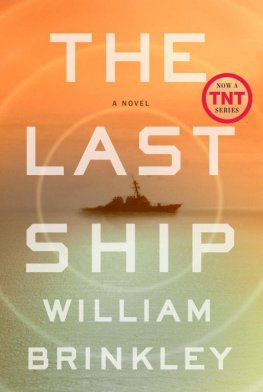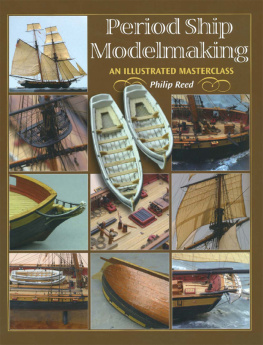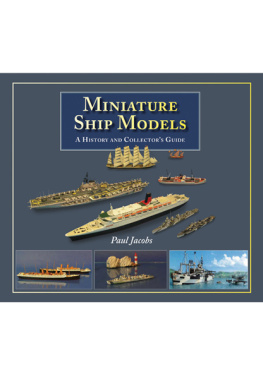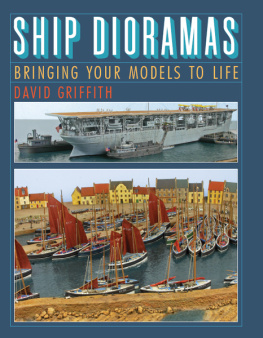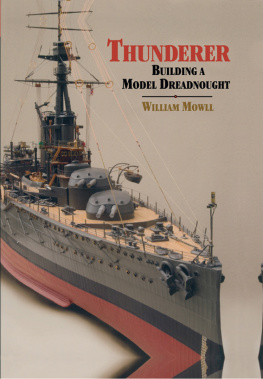For Susie, my true love these fifty years and more.
Copyright William Mowll 2018
First published in Great Britain in 2018 by
Seaforth Publishing,
A division of Pen & Sword Books Ltd,
47 Church Street,
Barnsley S70 2AS
www.seaforthpublishing.com
British Library Cataloguing in Publication Data
A catalogue record for this book is available from the British Library
ISBN 978 1 5267 2628 5 ( HARDBACK )
ISBN 978 1 5267 2629 2 ( EPUB )
ISBN 978 1 5267 2630 8 ( KINDLE )
All rights reserved. No part of this publication may be reproduced or transmitted in any form or by any means, electronic or mechanical, including photocopying, recording, or any information storage and retrieval system, without prior permission in writing of both the copyright owner and the above publisher.
All illustrations and photographs are from the authors collection unless otherwise stated.
The right of William Mowll to be identified as the author of this work has been asserted by him in accordance with the Copyright, Designs and Patents Act 1988.
Pen & Sword Books Limited incorporates the imprints of Atlas, Archaeology, Aviation, Discovery, Family History, Fiction, History, Maritime, Military, Military Classics, Politics, Select, Transport, True Crime, Air World, Frontline Publishing, Leo Cooper, Remember When, Seaforth Publishing, The Praetorian Press, Wharncliffe Local History, Wharncliffe Transport, Wharncliffe True Crime and White Owl
Contents
Foreword
T hroughout my life it has been a delight and privilege to view some of the best ship-model collections in the world, and over many years I have developed an ever-growing appreciation of this skilled art and craft. During my time at the National Maritime Museum, Greenwich, it became clear that while model collections have many purposes, the most important function is as an aid to teaching and education. On first seeing William Mowlls model of HMS Gannet , I was amazed not only at the world-class standard of workmanship, but also that he had captured most successfully the elusive spirit of this ship.
I have been associated with Gannet for many years, and from 20002006 was the directing naval architect of the team assembled at Chatham Historic Dockyard for the refurbishment of this naval sloop, now nearing 140 years in age. The restoration team worked throughout in great harmony and the ship was completed on time and within budget. Using twenty-first-century model-making technology, William Mowll has built a model of the constructed steam-powered gun vessel of the nineteenth century. Planned in every detail, the model Gannet gives us a glimpse into the lives and work of the seafaring men and of the Royal Navy which protected British trade and worldwide interests before the Great War.
Fred M Walker
Formerly Consulting Naval Architect, the National Maritime Museum, Greenwich
Acknowledgements
Acknowledgements and gratitude are owed to the following, in alphabetical order: Richard Briggs ( TS Mercury Old Boys Association); Richard Chasemore, engine and boiler illustration; Andrew Choong, Plans Service, National Maritime Museum, Greenwich, London; John Cundell, former editor of Model Boats ; Malcolm Darch FSNR ; Bill Ferris OBE , Chief Executive, CHDT; Jeff Frier CENG FRINA ; Peter Hillman ( TS Mercury OBA); Richard Holdsworth MBE , Museum Director, Chatham Historic Dockyard; Michael Kosten, Editor, Ships in Scale ; Michael E Leek, author and illustrator; Mike Lee, Inflexible and coppering; Julian Mannering, Editorial Director, Seaforth Publishing; Roger Marsh, European Editor, Ships in Scale ; Ken Martin, Chief Operating Officer, The American Philatelic Society; Ben Mowll RMSA , marine artist; Josh Mowll, author, photographer and CGI graphics; T Nielsen and Co Ltd, Shipbuilders, Glos Docks; Stanley Paine ARCA ; John Regan, sculptor in miniature figures; Dr Alistair Roach, author; Dr Stephanie Rudgard-Redsell, for bringing order out of chaos in editing the material for this book; Stephen Saunders, son of the last bursar of TS Mercury ; Steve Taylor, technical consultant in GRP lamination; Fred M Walker, author and naval architect i/c Gannet restoration programme in association with BMT Ship Design, also consulting naval architect to the NMM Greenwich; Adrian L White, TS Mercury History , 18851968 (2003); M White, former student at the Medway College of Art c 1990, for the coloured ships illustration; Cdr Alastair Wilson RN , naval historian ( HMS Warrior ).

Internal details on all three deck levels of HMS Gannet (1878) model at a scale of 1:48 a glimpse of how a full-scale restoration would appear.
Introduction
W hy Gannet and why a model of this ship? To answer the two questions, there is a need to appreciate a relatively recent change in mood and attitude towards the preservation of nautical and naval history in UK. The fresh thinking really began with a single letter, written by Dr E C B Corlett to The Times newspaper in 1967, with a plea to our maritime nation to rescue SS Great Britain (1843) from the Falkland Islands before it was too late. This famous ship, designed by Isambard Kingdom Brunel, was in a shocking state of decay, with only months left before disintegration beyond repair.
That seminal letter was met initially with a ready response by certain individuals and started a new wave of interest in preserving the nations four very special transitional ships, starting with Great Britain , quickly followed by HMS Warrior (1860), the total refurbishment of the Antarctic exploring ship SS Discovery (1901), and finishing with the repair and restoration in this century of HMS Gannet (1878). These ships were all formerly powered by steam and sail, and each of them in their different locations was just surviving, more by chance than usage.
Tourism is the other reason for their survival. Without the renewed emphasis we now place on visitor destinations, they would not have any reason to be maintained as exhibition pieces which have significantly altered the way major cities such as Bristol, Portsmouth, Dundee and Chatham have developed as tourist attractions, and each one of these ships is now presented as a prime exhibit for visitors from all over the world. They stand as talismans of pure wonder for the triumphs achieved by British nineteenth-century ship designers, builders and engineers.
From the 1970s to the 1990s, financial support for these rescue and restoration initiatives was very difficult to find, and despite what the general public may regard as high entry-ticket prices to see these wonders of a bygone age, not a single one of them would ever be able survive without extra funding. The Heritage Lottery Fund has now touched each of these preserved ships, and whilst money is still tight, they do now enjoy life and status as the proud possessions of the cities where they lie in state, rather than being strange obscurities from a past age which are of no general interest to anyone. Intriguingly, they also appeal to a wider spectrum of interests where the restoration has included the social life of the ship, with their interior furnishings and domestic details thus encompassing social and cultural history, in addition to naval history. A highly polished wardroom table and chairs with correctly laid place settings ornamented with silver cutlery, napkin rings and cut-glass decanters, all evoking a bygone age, have an appeal for many visitors which goes well beyond the serried ranks of heavy neatly arranged along a gun deck.






